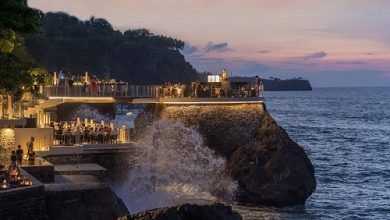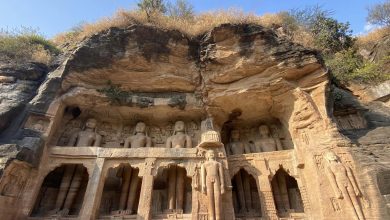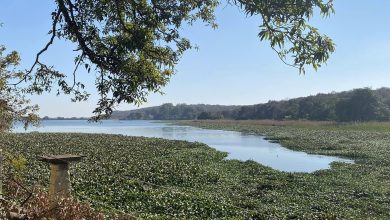Andaman & Nicobar Islands Diary: Baratang, Jarawas & Ross Island

Port Blair: One-hour ferry ride costing Rs 1375 pp brings one back to Port Blair from Neil Island. Next day being the last day of our stay in the islands we wanted to wrap-up our tour by visiting the Baratang island. For this to happen we had to drive through the Jarawa Reserve Area. Last on day’s itinerary was a light and sound show in the evening at the Ross Island.
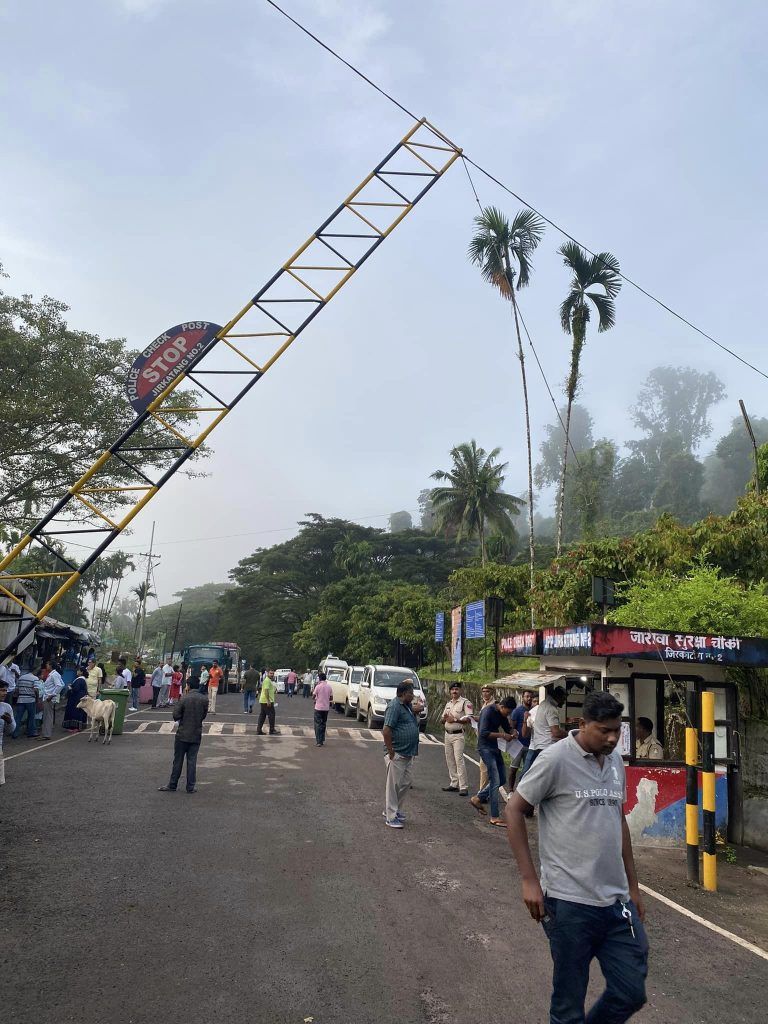

Baratang, 101 km from Port Blair, is famous for its dense mangrove creeks and unique limestone caves. One has to cross the Mid Strait in a ferry to reach the island which is a gateway to the middle and north Andamans.

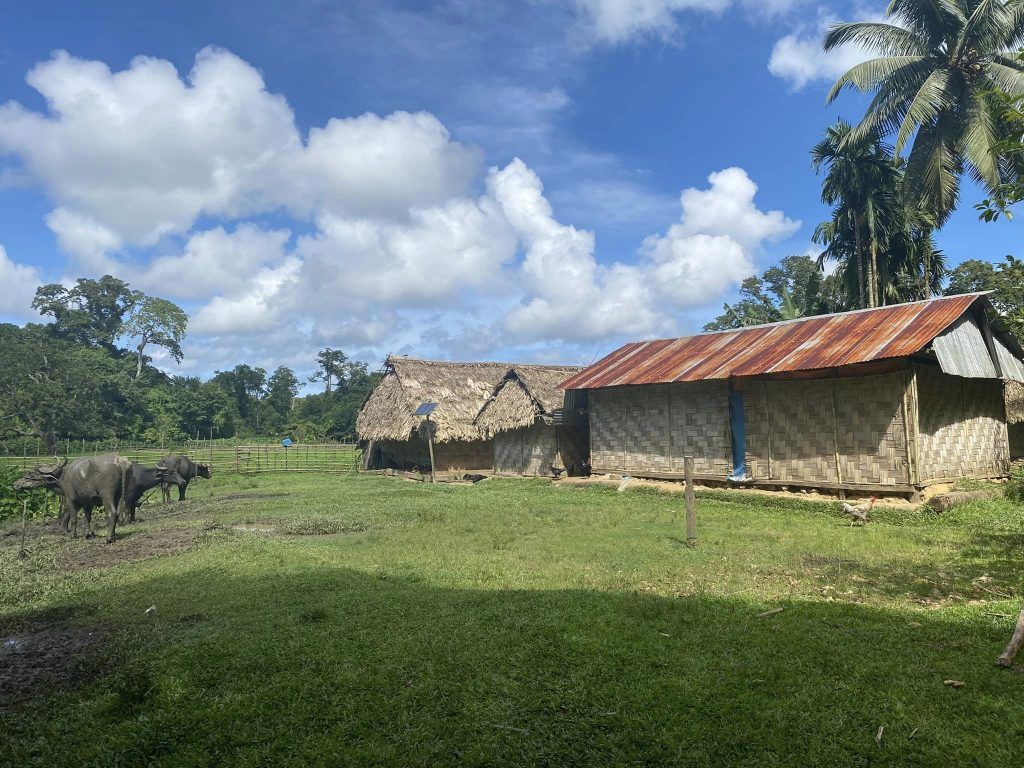
Once you cross the Strait a motorboat takes you to the limestone caves, accessible through a healthy mangrove. After the boat ride, a 1.2 kilometer trek through a forest and Naya Dera village takes you to the caves of stalactites and stalagmites formed over millions of year ago. Once at the bottom of the ocean, today walls of these beautiful caves — amazing shapes and figures of stalactites and stalagmites — are a major tourist attraction of the Andamans.
While visiting these I recalled my earlier visit to Mawsmai limestone caves in Cherrapunji in Meghalaya. In Cherrapunji one had to crawl through the wide caves at many places, while here one could easily walk in the narrow caves.
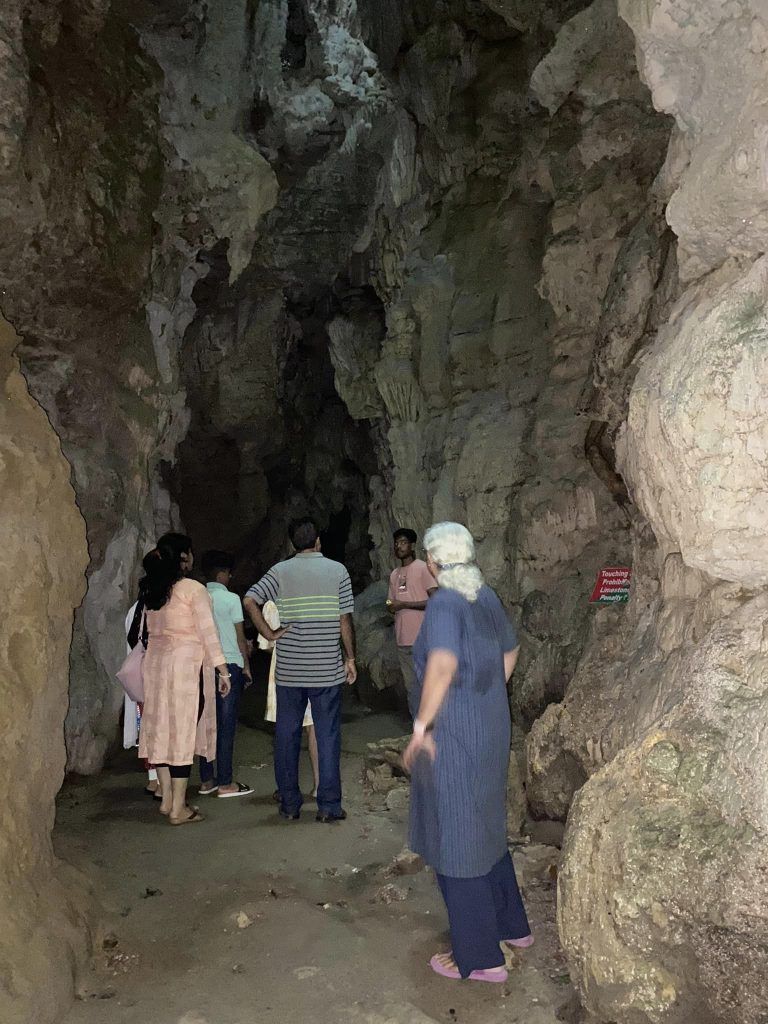
Stalagmite rocks grow from the ground up while stalactites hang from the ceiling in icicle form. Many a time they join each other turning into a pillar. Both rocks owe their existence to rich mineral water which drips from the ceiling or roof of the caves.

While returning from the caves a 300 meter walk through the mother nature’s unique freak gallery — mangrove — will classify as a grand experience of the trip to Andamans.
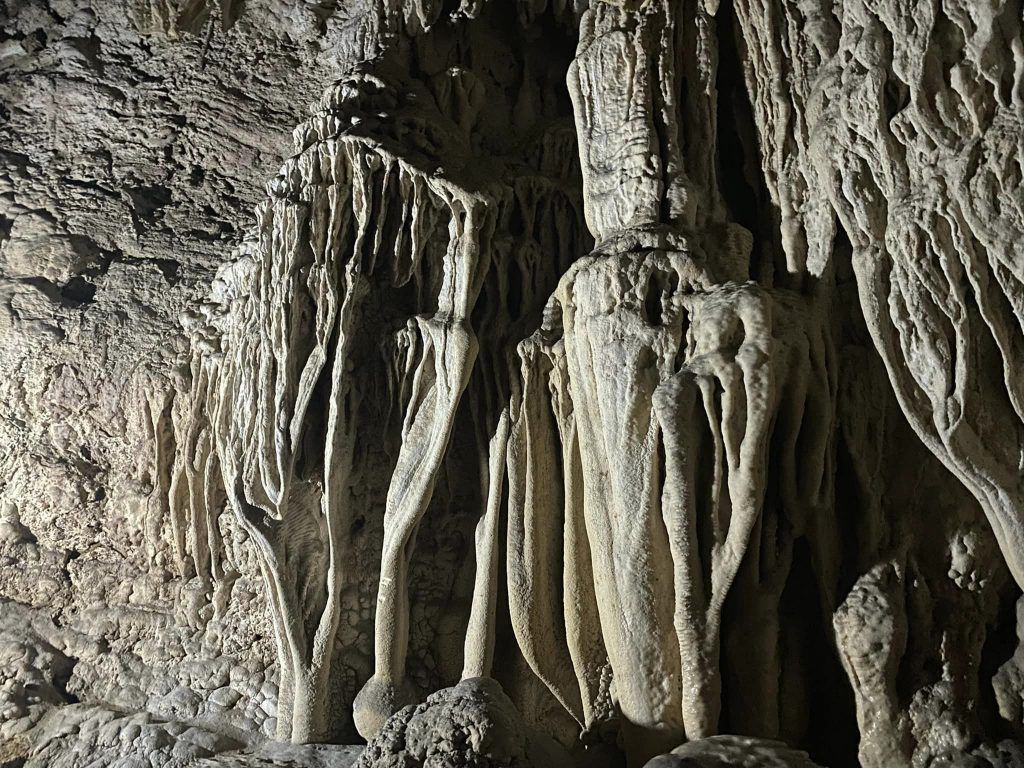
Today Andaman Trunk Road also called NH4, through the Jarawa Reserved Area, has become a lifeline of the Andamans. This road link, also referred to as Port Blair-Diglipur road, connects the south Andamans with the middle and north section. Since ferries and helicopters are not viable as mass transport vehicles, the government had to construct a 51 km road through the Jarawa Reserve which was otherwise out of reach for the entire world.
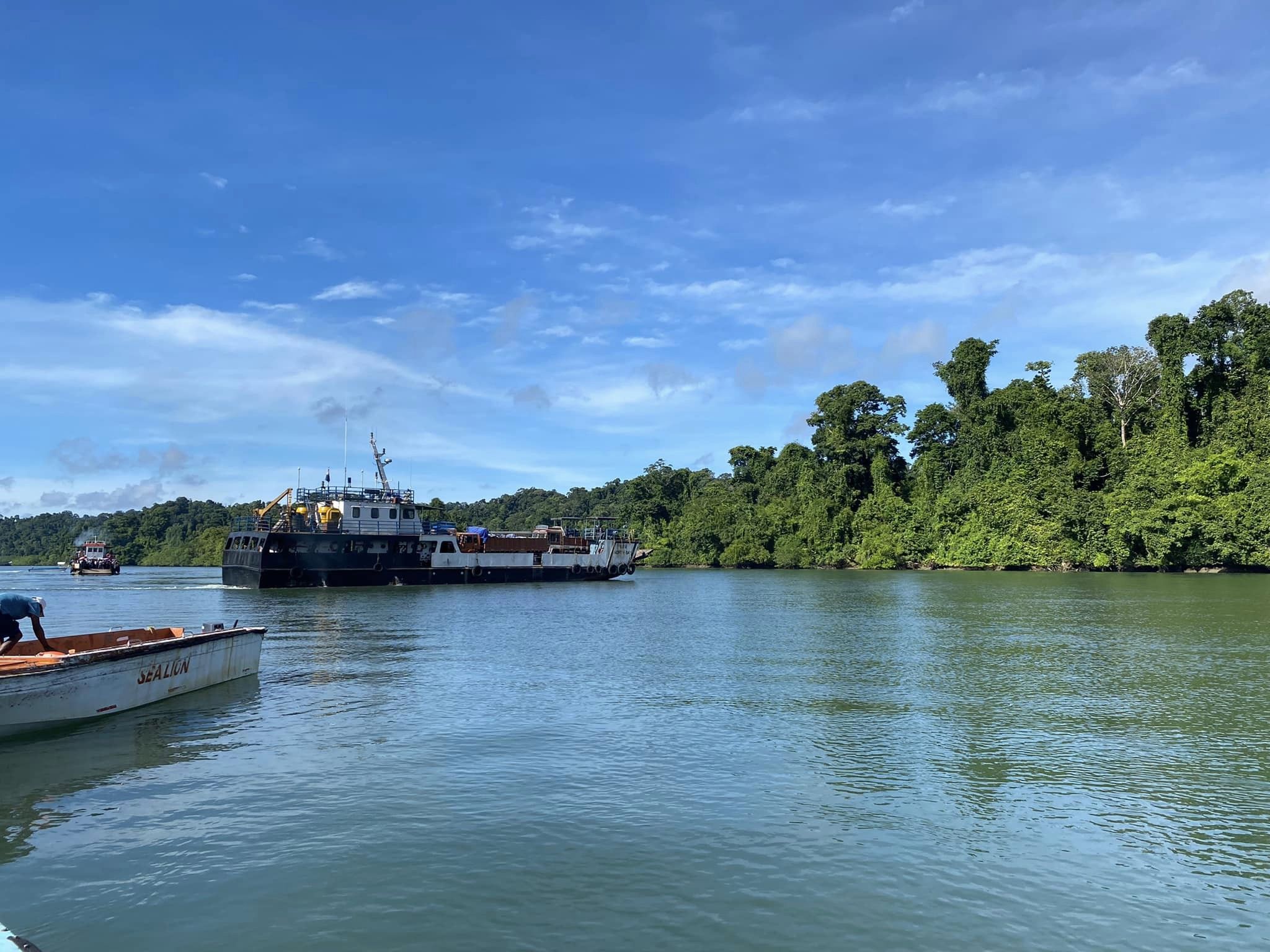
Port Blair-Baratang day trip starts at 3 am. After a 49 km drive one reaches the Jirkatang Police Check Post to join a serpentine queue of vehicles to cross the Andamans most sensitive and protected Jarawa Reserve in a convoy at 6 am. Early start ensures pole position in the queue. It helps in crossing the Mid Strait on a ferry quickly and hiring boats to visit the mangrove and limestone caves.
The check post has a number of shacks which open shop at 3.15 am to serve fresh and piping hot delicious idly, vada, dal vada, parantha korma and tea. These shacks are managed by families and taste of savouries served by them will simply leave you craving for more.

There are pay and use facilities and rain shelters at the post. In fact, majority of tourists spots and beaches in the Andamans have pay and use facilities for men and women.
Only four convoys per day are allowed from these check posts. Every passenger and vehicle is accounted for at the entry and exit of the reserve.
From Jirkatang the convoys leave at 6 am, 9 am, 12 noon and 3 pm. From the Mid Strait Check Post on the northern end of the reserve, the convoy timings are 6.30 am, 9.30 am, 12.30 noon and 3.30 pm. Only ambulances and mortuary vans have 24×7 passage right. Two and three-wheelers are not allowed to cross the reserve.
Vehicles have to exit the reserve without stopping. Photography, videography or interaction in any form with tribals is prohibited. Forest guards patrol the reserve on two-wheelers to keep an eye on offenders who are fined Rs 10000 along with suspension of the vehicle’s permit and driver’s license.
Fiercely independent, Jarawas have been living in these forests for centuries, mistrusting and shunning the so-called civilised world. The administration has initiated steps to protect the tribe and keep it away from the modern world.

Over the years Jarawas have become friendly and seem to be willing to change their lifestyle. Some speak a smattering of Hindi while many use sign language to convey their needs to forest guards who are perceived to be a friendly lot by the Jarawas.

In addition to using traditional forest trails to commute from one point to another, they have also started using the NH4 for faster commute. Men, women and kids can be seen walking on the road. In fact kids and women can even be seen travelling on dumpers. They request the forest guards to help them hitch-hike on dumpers.
While going up and down the reserve we saw a number of men, women and kids. Kids looked excited and cheerful while perched on the moving dumper. Like all kids they were innocence personified. It is the intense eyes of men and women and their dead pan face which will haunt me for ages. They were looking at us with blank eyes and expression which made me uncomfortable. This image is likely to stay on forever.

Gone are the days when they moved around near naked in these jungles. They have started wearing clothes. Have started communicating with the outside world wherever possible. They hitch hike.
They are reaching out to us. In the name of preserving their identity why keep them in forest and deny them the fruits of freedom? They too deserve a modern lifestyle. They must be provided healthcare, education and social incentives so that they too become a part of the mainstream like all of us. No human being should be treated like an animal in a zoo. If preserving one’s identity is so important, all of us should be reverting back to the caveman’s era.
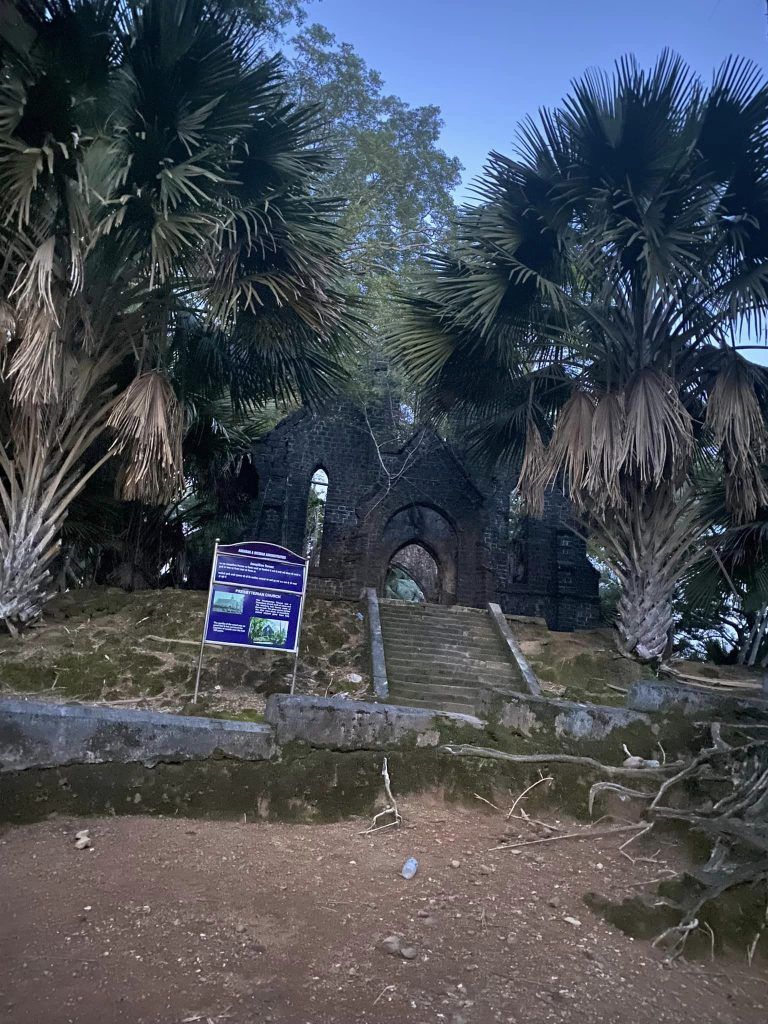
One must return to Port Blair by the 12.30 convoy from the Mid Strait to catch the light and sound show at the Ross Island (Subhash Chandra Bose Dweep).

Established as a penal colony by the Britishers to house political prisoners, the island became administrative headquarters for the region. After its occupation by the Japanese it was visited by Netaji for three days in 1943. Today this small island is known for its ruins of church, printing press, ballroom, barracks, club, bakery, commissioner’s bungalow, etc. In fact trees were growing out of a single storey building in the complex, exactly like in the Ta Prohm temple of Angkor Wat in Siem Reap, Cambodia.
A very well scripted and produced light and sound show takes you down the historic lane. Meanwhile, new version of the Cellular Jail’s light and show is also ready and is likely to start next month.

